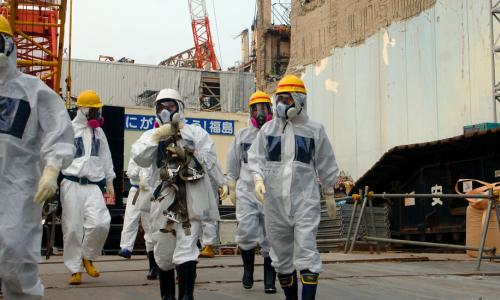UCS coverage of the March 2011 disaster at Fukushima Daiichi.
Within hours of the devastating earthquake and tsunami that killed tens of thousands along the eastern coast of Japan on March 11, 2011, the world learned of another casualty of the disaster: the Fukushima Daiichi nuclear power plant.
The Fukushima crisis brought nuclear power safety issues into the spotlight in a way unknown since the Chernobyl disaster in 1986. The press and public needed clear, accurate explanations of what was going on in Japan and how it might affect the rest of the world. In the weeks following the disaster, UCS experts responded to this need by sharing their analysis of the crisis and its implications for the US with the media, policymakers, fellow scientists and the public through a variety of channels:
- On the All Things Nuclear blog, where UCS experts have offered insights on a variety of topics related to the crisis;
- Through an FAQ that provides in-depth answers to a wide range of questions about the crisis;
- In media briefings, available by request, through the first three weeks of the crisis, where UCS nuclear power experts David Lochbaum, Edwin Lyman and Ellen Vancko helped reporters make sense of each day's news from Japan;
- In testimony before Congress:
- Dr. Edwin Lyman's March 16 testimony to the Senate Environment and Public Works Committee
- David Lochbaum's March 29 testimony to the Senate Energy and Natural Resources Committee
- Lochbaum's March 30 testimony to the Senate Energy and Water Development Appropriations Subcommittee
- Lyman's April 6 testimony to the Subcommittee on Oversight and Investigations of the House Committee on Energy and Commerce
- Lochbaum's May 13 testimony to the Joint House Subcommittees
- Lyman's June 7 testimony to the Senate Energy and Natural Resources Committee
- On television and radio programs such as MSNBC's Rachel Maddow Show and NPR's Diane Rehm Show.
It may be years before the consequences of the crisis are fully understood. UCS continues to follow events in Japan and will provide information and analysis on significant developments as they occur, while we shift our focus to using lessons learned from Fukushima to improve nuclear power safety at existing and future reactors.




